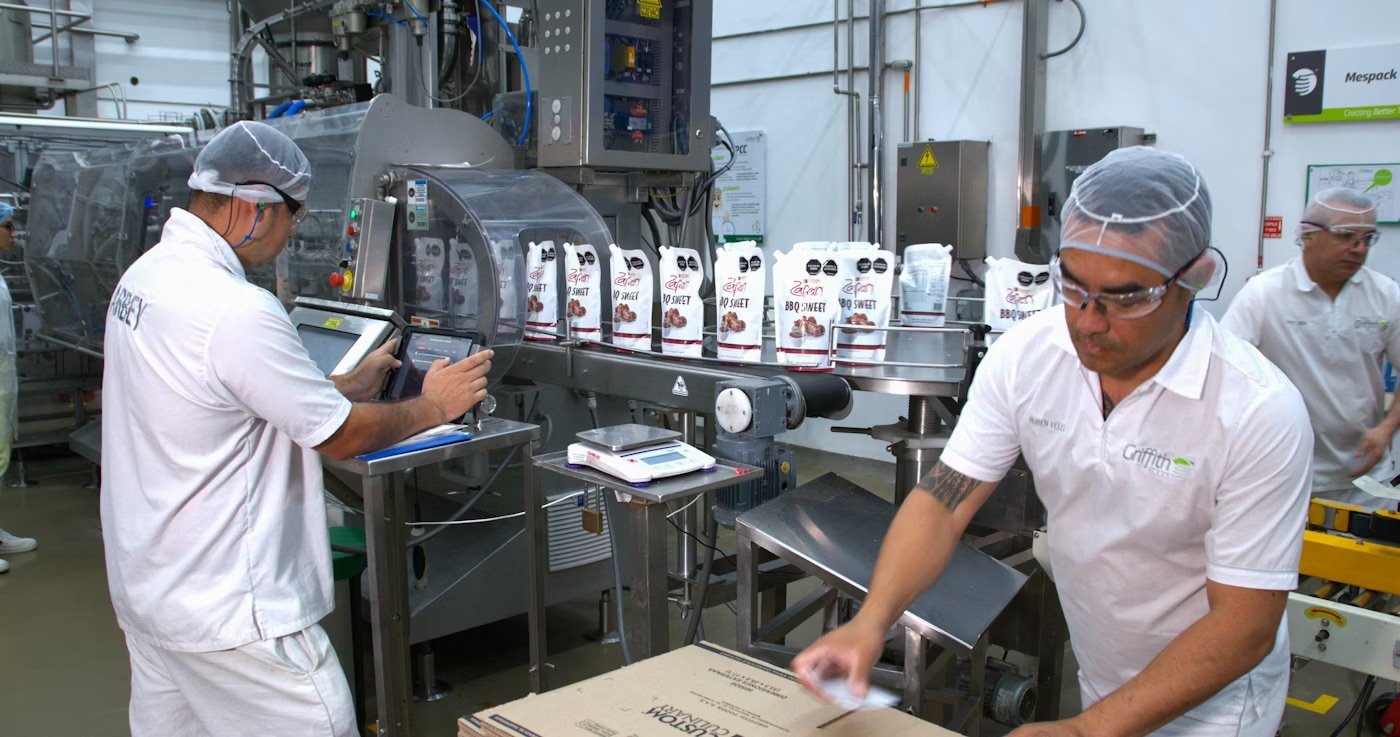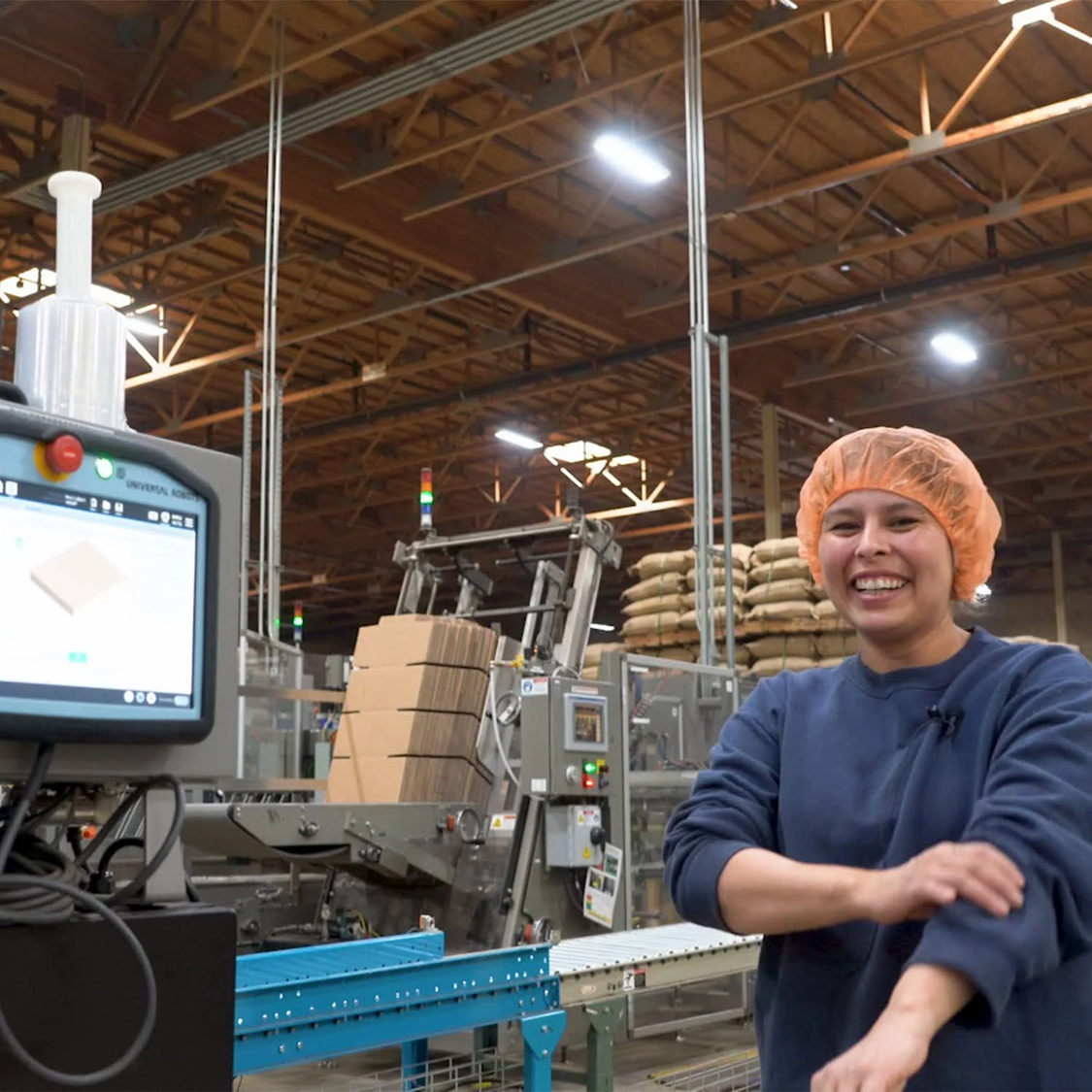When every shift ends with sore backs and tired shoulders, it’s not just fatigue — it’s a signal that something needs to change.
At Griffith Foods Colombia, operators were lifting, twisting, and stacking thousands of boxes every day on two high-volume doypack lines. Ergonomic assessments confirmed what workers already felt: the repetitive palletizing work carried a high risk of musculoskeletal injuries.
But instead of choosing between safety and productivity, Griffith Foods found a way to achieve both.
From 10,000 repetitive motions to zero
Each day, operators on Line 1 made 5,775 repetitive movements, and those on Line 2 made 5,005 — all now eliminated with the installation of a Robotiq PE10 Lean Palletizer.
“Today those movements went to zero thanks to the robot. People finish less tired “
– Santiago Ospina
Plant Manager at Griffith Foods Colombia
With support from IGPS, Robotiq’s integration partner, Griffith Foods deployed Colombia’s first Robotiq Lean Palletizing cell — designed to boost safety, maintain human-centered operations, and support high-volume production.
Built for flexibility, engineered for reliability

Griffith Foods’ operation is anything but simple. The plant handles 32 SKUs across multiple box formats and pallet patterns—feeding into a single palletizing cell. The PE10 manages it all with precision: operating at 10 cycles per minute, handling loads up to 12.5 kg (28 lb), stacking up to a height of over 2,750 mm (108 in), and managing multiple SKUs from two production lines.
The integrator used a digital twin model during design and engaged in comprehensive Factory Acceptance Testing (FAT) to ensure the system would run smoothly from day one.
Since its installation in August 2024, the system has achieved zero intrinsic equipment failures.
“Whenever we’ve had stoppages, they’ve been due to external factors, not the robot.”
– Santiago Ospina
Human-centered automation in action
For Griffith Foods, automation is about protecting humans—not replacing them. The new palletizing cell removed the heaviest, most repetitive tasks, enabling staff to be redeployed into higher-value roles while operating with improved well-being and productivity.
Safety features were built in from the start: proximity sensors slow the cobot’s motion when an operator enters the risk zone; collision contact would be soft and non-injurious.
ProFood World
Resource-allocation also improved:
“We went from needing six people on the line to only four… Our aim was to free up personnel for deployment in higher-need areas.”
The difference was not just in head-count but in work-life balance. One shift was eliminated; staff gained more rest and family time.
The project aligned with Griffith Foods’ internal Lean framework (GPS – Griffith Production System), and the installed system was recognized internally under the “Orange Bell” program, earning second place globally within the company.
The takeaway
When a company with a people-first culture embraces automation, it sets a powerful example for the industry. At Griffith Foods Colombia, human-centred automation isn’t a buzzword—it’s how they’ve eliminated 10,000 repetitive motions per day, improved ergonomics, and achieved consistent uptime with no equipment failures.
Because when technology works for people, productivity follows naturally.
Want more stories from real factories like yours?
Follow Robotiq on LinkedIn and join over 75,000 manufacturers seeing how automation keeps people safe, and production running strong.
![]()

The post “A Safer, Smarter Way to Palletize at Griffith Foods Colombia” by Juan Manuel Herrera Medina was published on 11/11/2025 by blog.robotiq.com






















